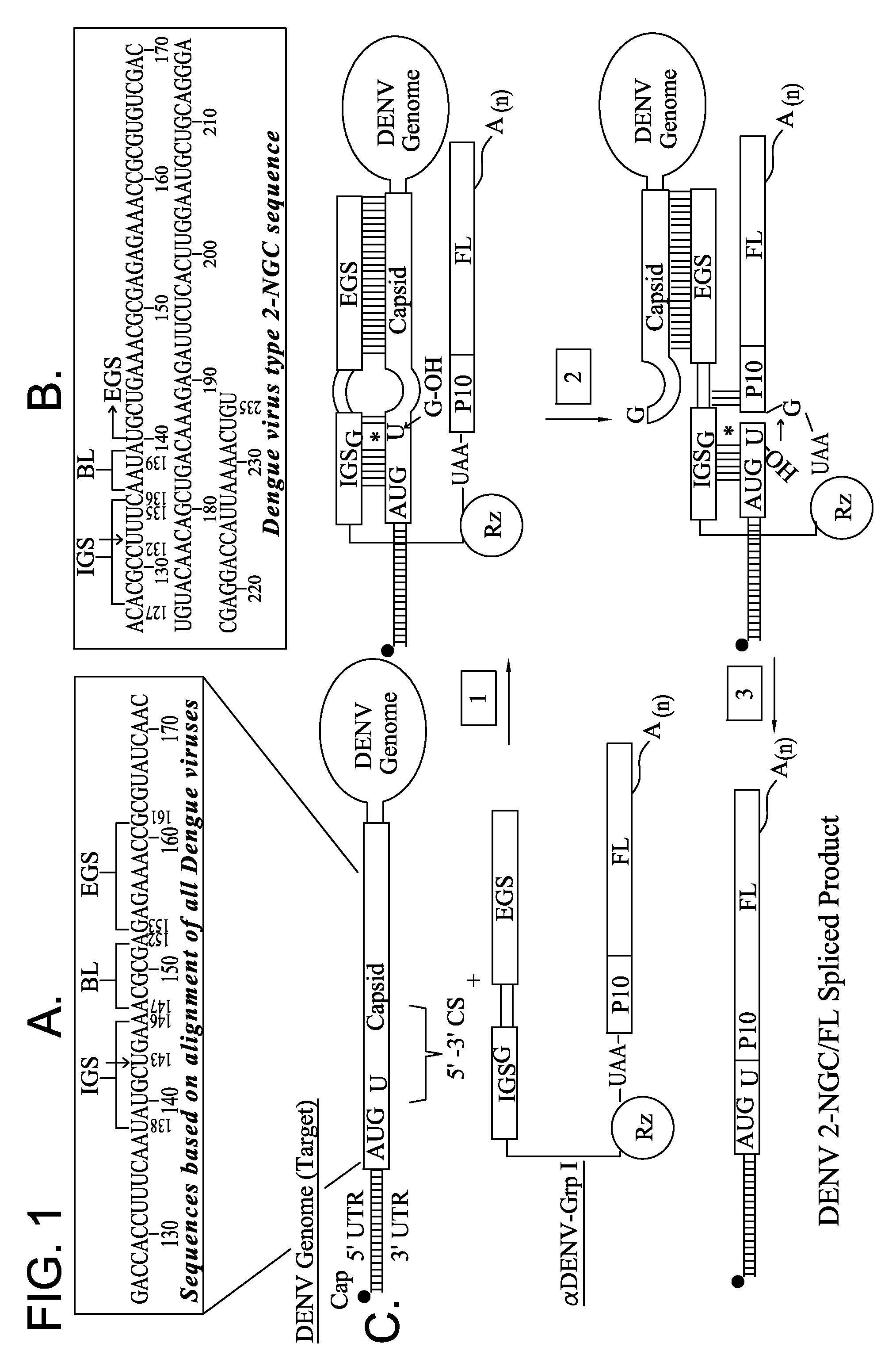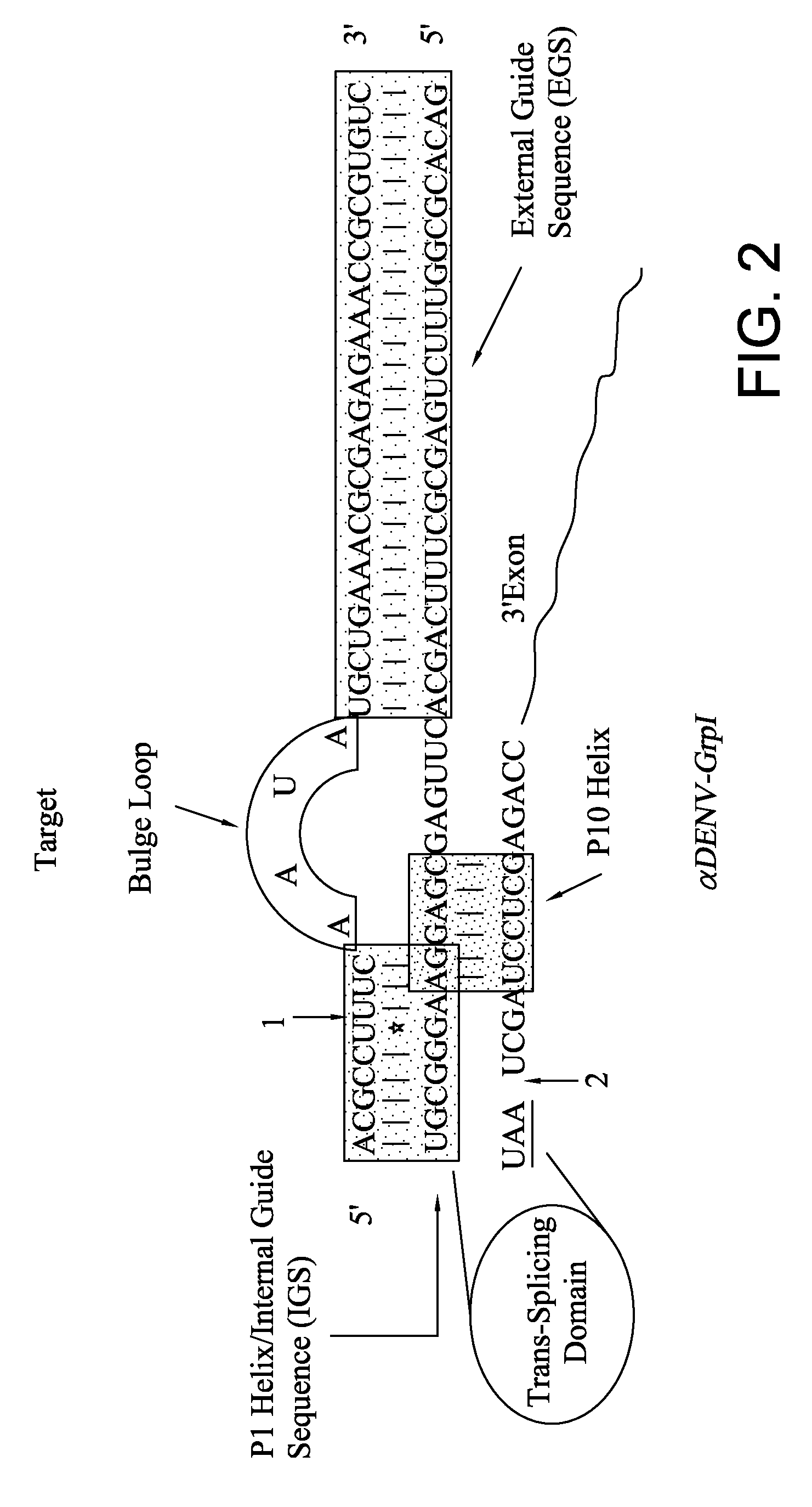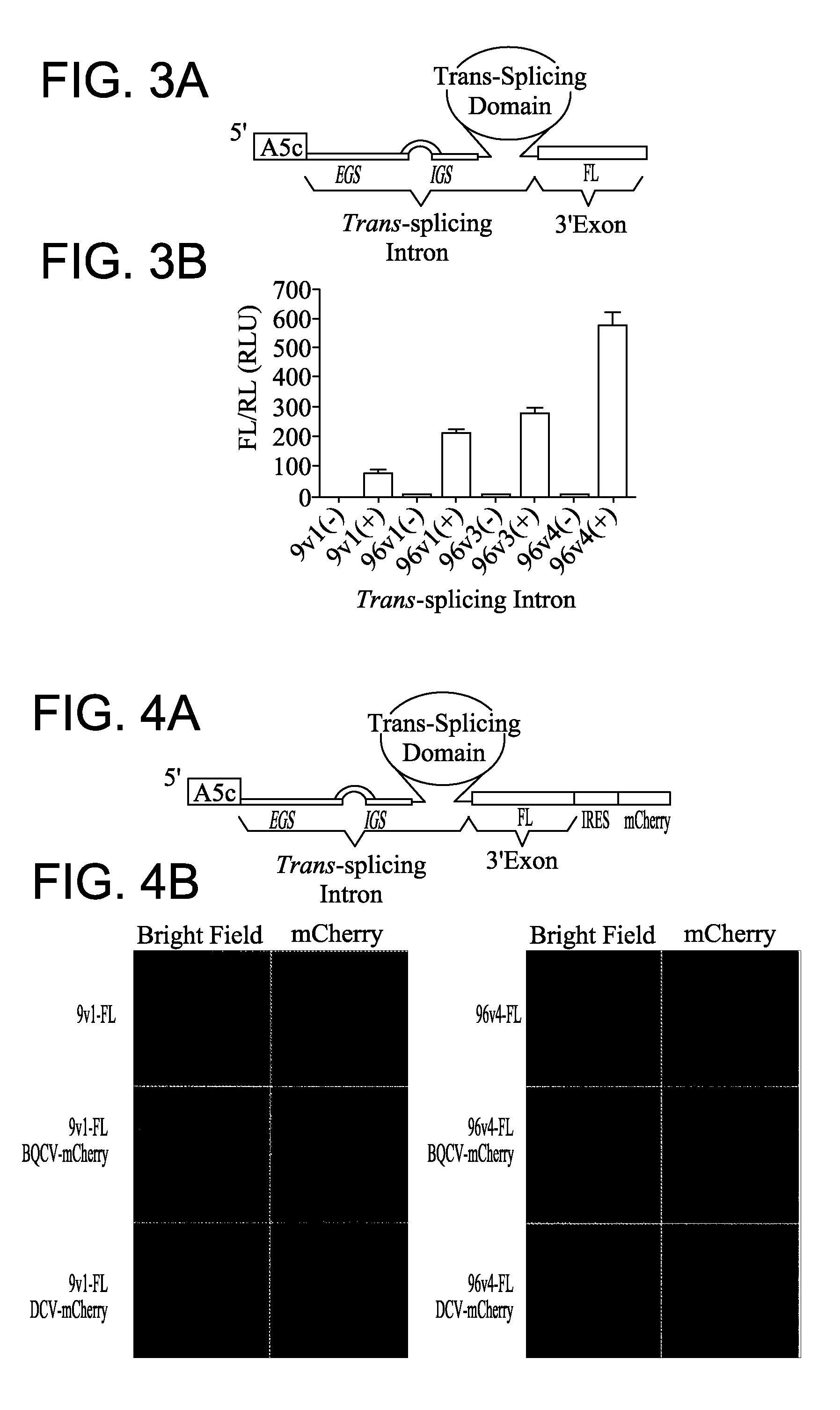Ribozyme Effector Gene in Dengue Fever Transmission and Disease Control
a dengue fever and effector gene technology, applied in the field of disease control, can solve the problems of reducing the activity of luciferase, affecting the effect of luciferase activity, and affecting the effect of rnai response, so as to achieve effective targeting, reduce the overall level of activation, and reduce the effect of luciferase activity
- Summary
- Abstract
- Description
- Claims
- Application Information
AI Technical Summary
Benefits of technology
Problems solved by technology
Method used
Image
Examples
example 1
Alignment of all DENV Genomes
[0054]DENV sequence data was obtained from the National Center of Biotechnology Information (NCBI). Sequences representative of all four serotypes of Dengue were aligned using ClustalX46. The aligned sequences comprise the following GenBank GenInfo identifiers:
[0055]12018173, 12018169, 12018171, 12659201, 2909798, 2909788, 2909786, 2909796, 6841603, 6841595, 6841605, 6841591, 6841601, 6841597, 6841593, 6841599, 6841587, 6841585, 6841589, 1000740, 1000738, 2909784, 1000736, 4926937, 4926935, 4926927, 4926929, 4926931, 2909794, 2909792, 1000742, 4926933, 2155257, 2723944, 323447, 6581076, 6581078, 2723942, 323449, 323650, 18644123, 1864412, 11119731, 19744844, 18644125, 18644127, 18643733, 4337012, 13386495, 1881708, 19071809, 13926152, 9280544, 14585842, 4926947, 4926939, 323654, 4926945, 4926943, 7329983, 7329981, 13540386, 14328931, 14485523, 323660, 17129645, 22901065, 22901063, 22901061, 1854040, 1854038, 1854036, 17129647, 24417519, 24417517, 2441751...
example 2
Analysis of Highly Conserved elements in the Dengue genome
[0081]All nucleotide position designations used throughout the present disclosure are relative to the published DENV-2 New Guinea strain C genome (DENV-2 NGC; GenBank Accession: M29095). 98 DENV genomes and genome fragments were aligned from the four different serotypes that were present in GenBank using the ClustalX program.
[0082]While overall similarity was highest within a given serotype, the alignment showed a significant conserved region between 131 and 164 nt having only one variable base at position 152 nt (FIG. 1a). This sequence was wholly contained within the Capsid (CA) protein gene, and overlapped with the 5′ CS (conserved sequence) identified as essential for replication23,25.
example 3
Anti-DENV Group I Trans-Splicing Introns (αDENV-GrpIs) that Target DENV-2 NGC Genomes
[0083]Two different uracil bases have been targeted on the positive sense genomic strand within the highly conserved 5′-3′ cyclization sequence (CS) region common to all serotypes of DENV with our αDENV-GrpIs. The preset ribozymes have demonstrated ability to specifically trans-splice a new RNA sequence downstream of the targeted site in vitro and in transfected insect cells as analyzed by firefly luciferase and RT-PCR assays. The effectiveness of these αDENV-GrpIs to target infecting DENV genomes is also validated in transfected or transformed Aedes mosquito cell lines upon infection with unattenuated DENV-2 NGC.
[0084]Group I introns were designed to target and catalyze trans-splicing within the conserved sequences of the 5′ CS region of DENV. These introns cleave either single stranded or homologously paired double stranded RNA at defined uracils and covalently join a 3′ exon tag to the end of th...
PUM
| Property | Measurement | Unit |
|---|---|---|
| Tm | aaaaa | aaaaa |
| temperature | aaaaa | aaaaa |
| temperature | aaaaa | aaaaa |
Abstract
Description
Claims
Application Information
 Login to View More
Login to View More - R&D
- Intellectual Property
- Life Sciences
- Materials
- Tech Scout
- Unparalleled Data Quality
- Higher Quality Content
- 60% Fewer Hallucinations
Browse by: Latest US Patents, China's latest patents, Technical Efficacy Thesaurus, Application Domain, Technology Topic, Popular Technical Reports.
© 2025 PatSnap. All rights reserved.Legal|Privacy policy|Modern Slavery Act Transparency Statement|Sitemap|About US| Contact US: help@patsnap.com



